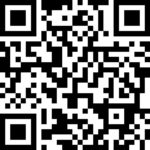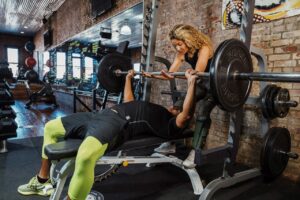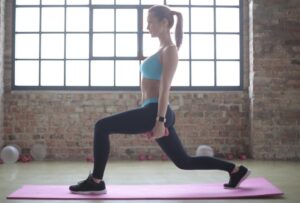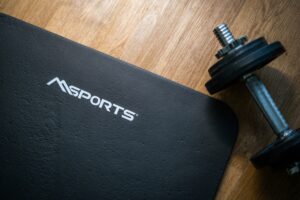Kettlebells are overlooked in traditional weight training because most people favor dumbbells, barbells, and cable machines.
However, they can offer unique benefits when used for the right exercises.
To that end, let’s break down 10 of the best kettlebell arm exercises and two arm workouts: one for beginners and one for more advanced trainees.
Brief Look at Arm Muscle Anatomy and Function
Here is a quick look at the primary arm muscles:
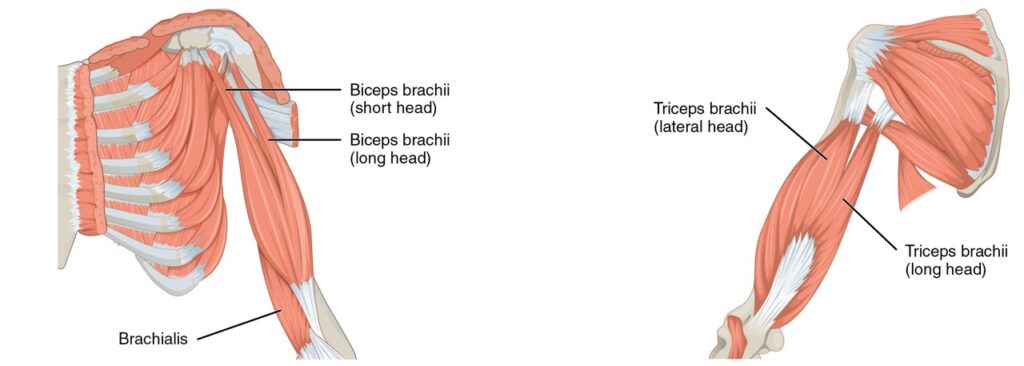
- Biceps – a two-headed muscle that makes up the front portion of your upper arm. Its primary functions are elbow flexion (bending the arm) and wrist supination (outward rotation of your hands) (1).
- Brachialis – a muscle located underneath the bicep. Its primary function is to assist with elbow flexion, and you generally don’t have to do anything special in your training to target and develop the muscle (2).
- Triceps – a three-headed muscle that makes up the back of your upper arms. Its primary role is elbow extension (straightening of the arm; the opposite of the bicep) (3). One of its heads (the long head) originates from the scapula and crosses the shoulder joint, which means elevating your arms places a more significant stretch on it. We’ll discuss how that can be useful later.
- Brachioradialis – a long muscle located on the upper outer portion of your forearms. It assists the biceps and brachialis with elbow flexion and is more active when your hands are neutral (palms facing one another) or pronated (palms pointing down) (4). It’s also involved in wrist supination (similar to the biceps) and pronation.
There are other forearm muscles, but we’ll focus on the upper arm muscles in this article. Stay tuned for a forearm article in the future.
Check out Hevy if you’re looking for a simple and effective app to log your workouts, analyze your performance over time, and follow your friends.
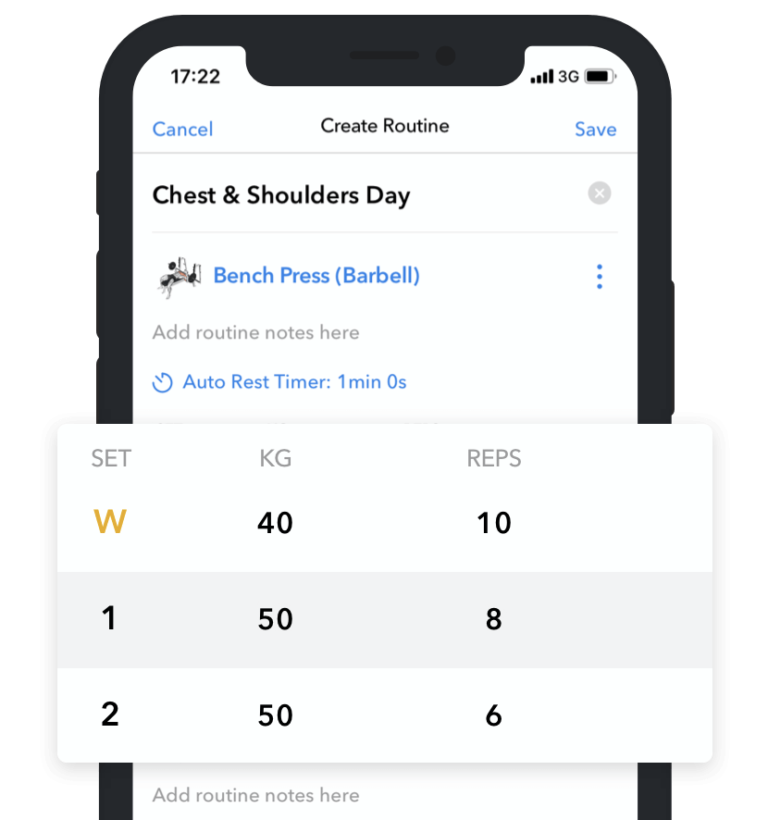
Hevy – Workout Tracker







Hevy – Workout Tracker
Create and log your pr workout with Hevy and track your progress
5 Kettlebell Bicep Exercises
1. One-Arm Kettlebell Bicep Curl
Regular curls, be it with kettlebells, dumbbells, or a barbell, are the most practical and effective exercise for trainees of all levels to target and develop the biceps and brachialis.
The single-arm bicep curl is beneficial as it lets you focus on one side at a time and get a good bicep pump going, even if you only have one kettlebell.
How to:
- Grab a kettlebell by the handle and stand tall.
- Position the weight to your side with your palm facing your body. You can place your other hand on your hip.
- Take a breath and curl the kettlebell until your wrist is slightly higher than your elbow. Rotate your hand out as you bend your arm so your palm faces the ceiling at the top.
- Slowly lower the weight until your arm is straight, and exhale.
- Once you finish training one side, grab the weight with your other hand and do the same number of reps.
2. Kettlebell Hammer Curl
Kettlebell hammer curls allow you to train both arms simultaneously with a heavier weight.
As mentioned above, the brachioradialis muscle becomes more involved with your hands neutral, which means you can target your forearms alongside your biceps and brachialis.
How to:
- Grab a heavier kettlebell by the horns and stand tall with your arms straight. You may have to lean forward slightly to keep your arms extended at the bottom.
- Assume a comfortable stance, bring your shoulders back, inhale, and squeeze your abs.
- Curl the weight up until your wrists are slightly higher than your elbows.
- Slowly lower the kettlebell to the bottom as you exhale.
3. Kettlebell Concentration Curl
Concentration curls are an old-school bodybuilding exercise for big biceps, and you can do them with a kettlebell.
Having your lower tricep against the inside of your thigh provides support and prevents you from using momentum.
How to:
- Grab a light kettlebell and sit on a bench, chair, or plyo box.
- Spread your legs wide enough to create room for curls, grab the weight with one hand, and position your lower tricep against your inner thigh for support. Your arm should be vertical.
- Inhale and curl the kettlebell until your wrist is slightly higher than your elbow.
- Pause briefly, lower the weight, and exhale, fully extending your arm.
- Once finished training one side, grab the kettlebell with your other hand and do the same number of reps.
One modification for a better bicep stretch at the bottom is to lean slightly to one side––if you’re training the right bicep, lean slightly to the right. Doing so places your arm at a slight angle (as opposed to being completely vertical) and leads to a more intense bicep stretch at the bottom.
You can look at a video demonstration by Menno Henselmans in the video below (5:16 minute mark):
4. Kettlebell Cop Hold Curl
With this variation, you hold the lower rounder portion of the kettlebell, and your fingers go through the handle of the weight. This allows the weight to be centered in your hand instead of below it, making the movement more like a dumbbell curl.
Depending on the size of the kettlebell, you may also find it more challenging to keep the weight stable, which could force your biceps to work extra hard during each rep.
It’s not an inherently superior exercise, but one you can occasionally include in your bicep training to keep things interesting.
How to:
- Cup a kettlebell with your fingers going through the handle.
- Stand tall and position the weight to your side.
- Bring your chest out, engage your abs, and inhale.
- Lift the weight up until your wrist is slightly higher than your elbow. Keep your elbow glued to your side.
- Lower the weight to the starting position and exhale.
- Once finished training one side, grab the kettlebell with your other hand and repeat.
5. Kneeling Preacher Crul
Like concentration curls, this unique kettlebell variation keeps your arm stable, preventing you from using momentum. This allows you to keep more tension on the biceps and, hopefully, see more growth.
How to:
- Grab a light kettlebell by the handle or cup it, similar to how you would for cop hold curls.
- Squat into a comfortable position. You can even have one knee on the floor for stability.
- Position your elbow against your knee for support.
- Take a breath and curl the weight, squeezing your bicep at the top position.
- Slowly lower the weight until your arm is fully extended, and exhale. You should feel an intense bicep stretch.
- Once you finish training one side, grab the kettlebell with your other hand and do the same number of reps.







Hevy – Workout Tracker







Hevy – Workout Tracker
Create and log your pr workout with Hevy and track your progress
5 Kettlebell Tricep Exercises
6. Kettlebell Lying Skullcrusher
The lying skullcrusher is a fantastic tricep exercise, particularly when you lower the weight behind your head to stretch the long head.
You can perform these with a heavier kettlebell (holding it by the horns with both hands) or a lighter one, training one arm at a time.
How to (both sides simultaneously):
- Grab a kettlebell by the horns and sit on a flat gym bench.
- Lie back carefully as you engage your tricep muscles and extend your arms.
- With the weight over your chest, bring your shoulders back, plant your feet on the floor, inhale, and squeeze your abs.
- Slowly lower the kettlebell behind your head as you bend your elbows.
- Pause briefly at the bottom. You should feel a stretch in this position.
- Extend your arms as you exhale.
7. Kettlebell Overhead Tricep Extension
Similar to skullcrushers, adding an overhead extension into your kettlebell training for the triceps can be highly beneficial for targeting the long head of the muscle group.
You can perform these with a lighter kettlebell and train one side at a time or hold a heavier one by the horns––whichever feels more comfortable.
How to (single arm):
- Grab a kettlebell by the handle and lift it overhead. The weight should be hanging down behind your hand. Place your free hand on your hip.
- Have your feet shoulder-width apart and bring your chest out.
- Inhale and slowly lower the weight behind your head until you feel a stretch in your tricep.
- Pause momentarily and extend your arm as you exhale.
- Once finished, do the same number of reps for your other side.
8. Kettlebell Tricep Kickback
The tricep kickback is one of the simplest kettlebell arm exercises you can do to provide a solid stimulus and keep your workouts interesting.
How to:
- Grab a light kettlebell by the handle and lean your torso to a parallel position.
- Bring your chest out to straighten your back.
- Lift your elbow to your side and inhale.
- Slowly extend your arm by engaging your tricep and pause when your elbow is fully extended.
- Lower the weight by bending your elbow while keeping it glued to your side. Exhale.
- Once finished, grab the weight with your other hand and repeat.
A quick tip from a trainer: As you extend your arm, elevate it slightly at the shoulder joint. Doing so will contract the long tricep head a bit more and could help with the mind-muscle connection and proper muscle activation.
9. Kettlebell Close-Grip Push-Up
The kettlebell close-grip push-up (similar to a diamond push-up) is an overlooked bodyweight exercise that provides a solid overload for the triceps.
Unlike other exercises on our list, the goal isn’t to lift the kettlebell but to use it as your foundation for push-ups. Because of that, I recommend using a slightly heavier weight that provides more surface area for your hands and feels stabler.
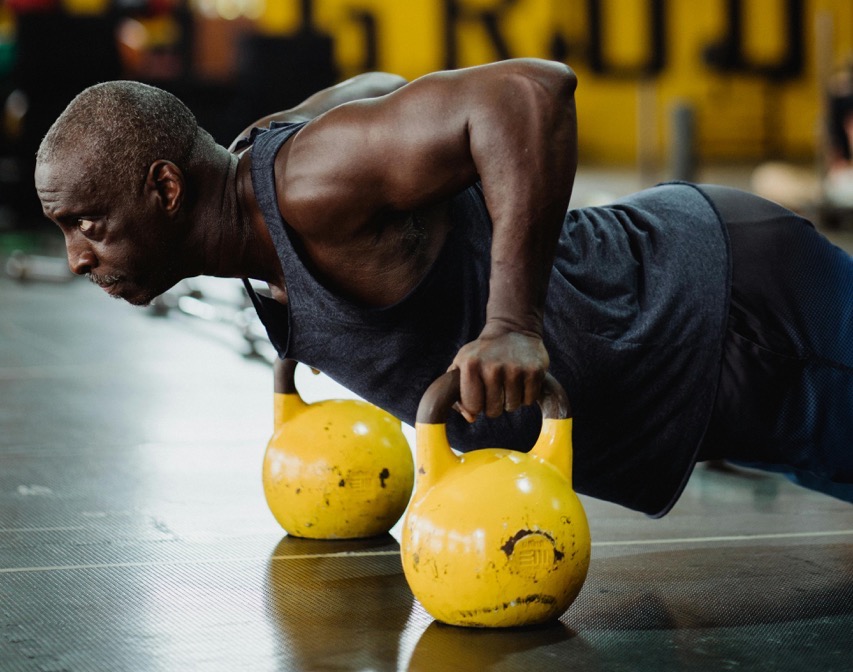

How to:
- Place the kettlebell on the floor, preferably on top of an exercise mat or a gym floor tile for extra traction.
- Get down on your knees and place both hands on the bell.
- Extend your body into a push-up position and have your feet at a comfortable width to provide lower body support.
- Take a breath and squeeze your abs.
- Slowly lower yourself as much as possible, and be careful not to flare your elbows. You can point your fingers forward and slightly out for your elbows to remain close to your body as you descend.
- Pause briefly at the bottom and explode to the top, fully extending your arms. Exhale.
10. Kettlebell Close-Grip Press
To finish the list of kettlebell tricep exercises, we have a movement that can build muscle by providing a fantastic overload through an extended range of motion.
You can do this exercise on the floor (i.e., floor press), but I recommend lying on a bench, as it provides more room to lower the kettlebell at the bottom. This can lead to a slightly better stretch and a superior tricep stimulus.
How to:
- Grab a kettlebell and sit on one end of a flat gym bench.
- Place both hands on the rounded bottom portion of the kettlebell and carefully lie back.
- As you lie down, extend your arms and position the kettlebell over your chest.
- Bring your shoulders back, plant your feet on the floor, and inhale.
- Slowly lower the weight to your lower chest.
- Press the kettlebell to the top as you exhale.
Kettlebell Arm Workout For Mass and Strength (Beginner & Advance)
Beginner Kettlebell Arm Workout
The following is a simple kettlebell workout targeting all major arm muscles. Feel free to adjust the number of sets and experiment with different rep ranges, but always do at least ten slow and controlled reps per set.
| Exercise | Sets | Reps | Rest (mins) |
| Standing Kettlebell Bicep Curl | 3 | 12-15 | 1.5-2 |
| Kettlebell Hammer Curl | 3 | 15-20 | 1.5 |
| Kettlebell Lying Skullcrusher | 3 | 12-15 | 1.5-2 |
| Kettlebell Overhead Tricep Extension | 3 | 15-20 | 1.5 |
Don’t take sets to failure. Instead, aim for moderate muscle discomfort where you only have two or three more reps in the tank.
Related article: 2 Effective Dumbbell Bicep Workouts to Get Large Muscular Arms
Advanced Kettlebell Arm Workout
As you’ll see in a moment, this workout is nothing special, but there are some notable differences that make it better suited for advanced trainees.
Most notably, there is more training volume, some sets to failure, more movements, and the use of supersets to save some time.
| Type | Exercise | Sets | Reps | Rest(mins) |
| Set | Kettlebell Close-Grip Press | 3-4 | 8-10 | 2-3 |
| Set | Kettlebell Hammer Curl* | 3-4 | 10-12 | 2-2.5 |
| Superset 1 | Kettlebell Lying Skullcrusher* | 3 | 12-15 | 1 |
| Superset 1 | Kettlebell Cop Hold Curl | 3 | 12-15 | 2 |
| Superset 2 | Kettlebell Close-Grip Push-Up | 3 | RPE 8-9 | 1 |
| Superset 2 | Kneeling Kettlebell Preacher Curl | 3 | 15-20 | 2 |
On movements tagged with *, perform the last set to failure (stop before your technique breaks down).
For supersets, recover at least a minute after the first exercise instead of immediately jumping to the second one. This is important for normalizing your breathing, at least to a degree, to perform better on the second superset exercise.
Remember, the goal is to stimulate the target muscles maximally, not to do cardio.
Related article: Free Workout Plans for Every Fitness Level
Conclusion
There you have it: some of the best kettlebell exercises to build impressive arms. As you can see, there’s nothing special about these movements because true results come from understanding and applying the fundamentals.
Experiment with these exercises, prioritize proper form, see which movements provide the best stimulus while stressing your joints and connective tissues the least, and aim for small improvements over time––doing more reps and lifting a bit more weight.
Are you looking for a way to track your workouts and make sure you’re improving? If so, check out Hevy––the ultimate workout-tracking app that allows you to log your sessions (exercises, sets, reps, weight, RPEs, and more) in seconds.







Hevy – Workout Tracker







Hevy – Workout Tracker
Create and log your pr workout with Hevy and track your progress
FAQs
1. What are the best kettlebell exercises for arms?
Some of the best kettlebell exercises for arms include the one-arm curl, hammer curl, cop hold curl, kneeling preacher curl, lying skullcrusher, overhead tricep extension, kickback, and close-grip press.
2. How heavy should the kettlebell be for arm workouts?
It depends on the exact movement, but you should generally be able to do at least 10-12 smooth and controlled reps through a full range of motion. Anything heavier can affect your technique.
3. How often should you do kettlebell arm workouts?
You can start with one weekly workout if you’re a beginner and introduce a second one as you get more advanced. However, you may need to adjust the training volume for the session to avoid overtraining.

